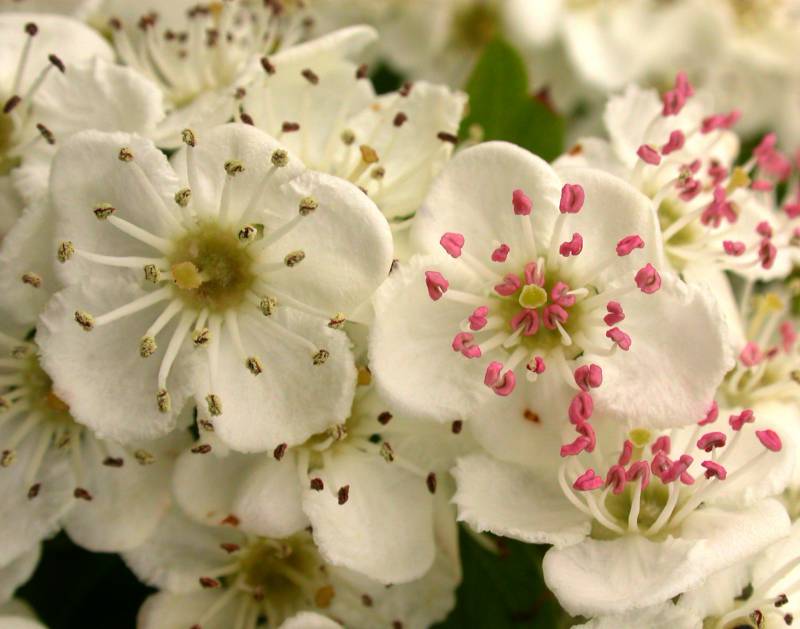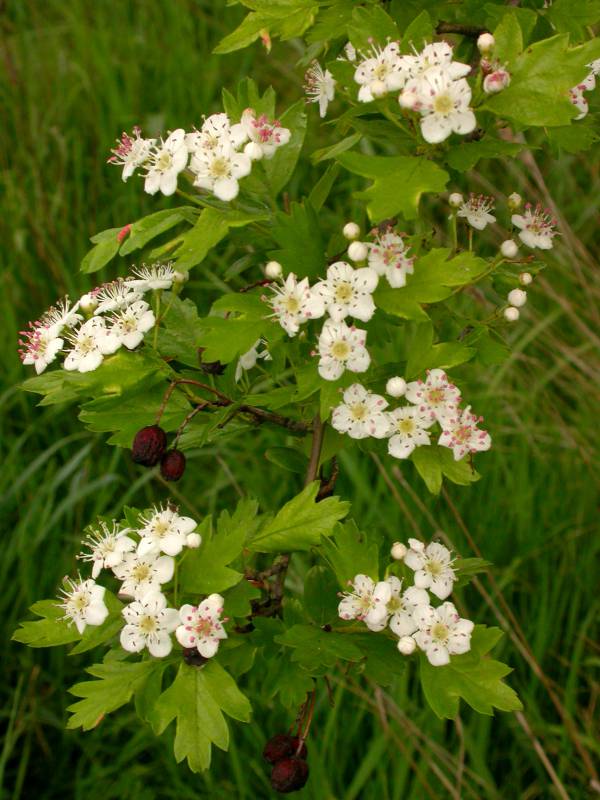Crataegus monogyna
Crataegus monogyna var. monogyna
English hawthorn, one-seed hawthorn
common hawthorn, English hawthorn, one-seeded hawthorn
Leaves ovate, deeply 3-lobed more than halfway to the midrib, 2.5-5 cm. long and nearly as broad.
Inflorescence a broad, dense, flat-topped cluster;
flowers 8-15 mm. wide, the petals white;
style 1.
Fruit a crimson berry, globose, 7-10 mm. in diameter, with single large seed.
Crataegus monogyna
Crataegus monogyna var. monogyna
Occurring chiefly west of the Cascades crest in Washington; southern British Columbia to California, east to Montana, also in the Great Lakes region and eastern North America.
Occurring chiefly west of the Cascades crest in Washington; southern British Columbia to California, east to Montana, also in the Great Lakes region and eastern North America.
- Local floras:
BC,
CA,
OR,
WA
- Local Web sites:
CalFlora,
CalPhotos,
Flora NW,
PNW Herbaria
WildflowerSearch
iNaturalist (observations)
USDA Plants Database
- LBJ Wildflower Center
- SEINet
- Plants of the World Online
- Encyclopedia of Life
- Wikipedia
- Google Image Search
- Local floras:
BC,
OR,
WA
- Local Web sites:
Flora NW,
PNW Herbaria
WildflowerSearch
iNaturalist (observations)
- LBJ Wildflower Center
- SEINet
- Plants of the World Online
- Encyclopedia of Life
- Wikipedia
- Google Image Search



